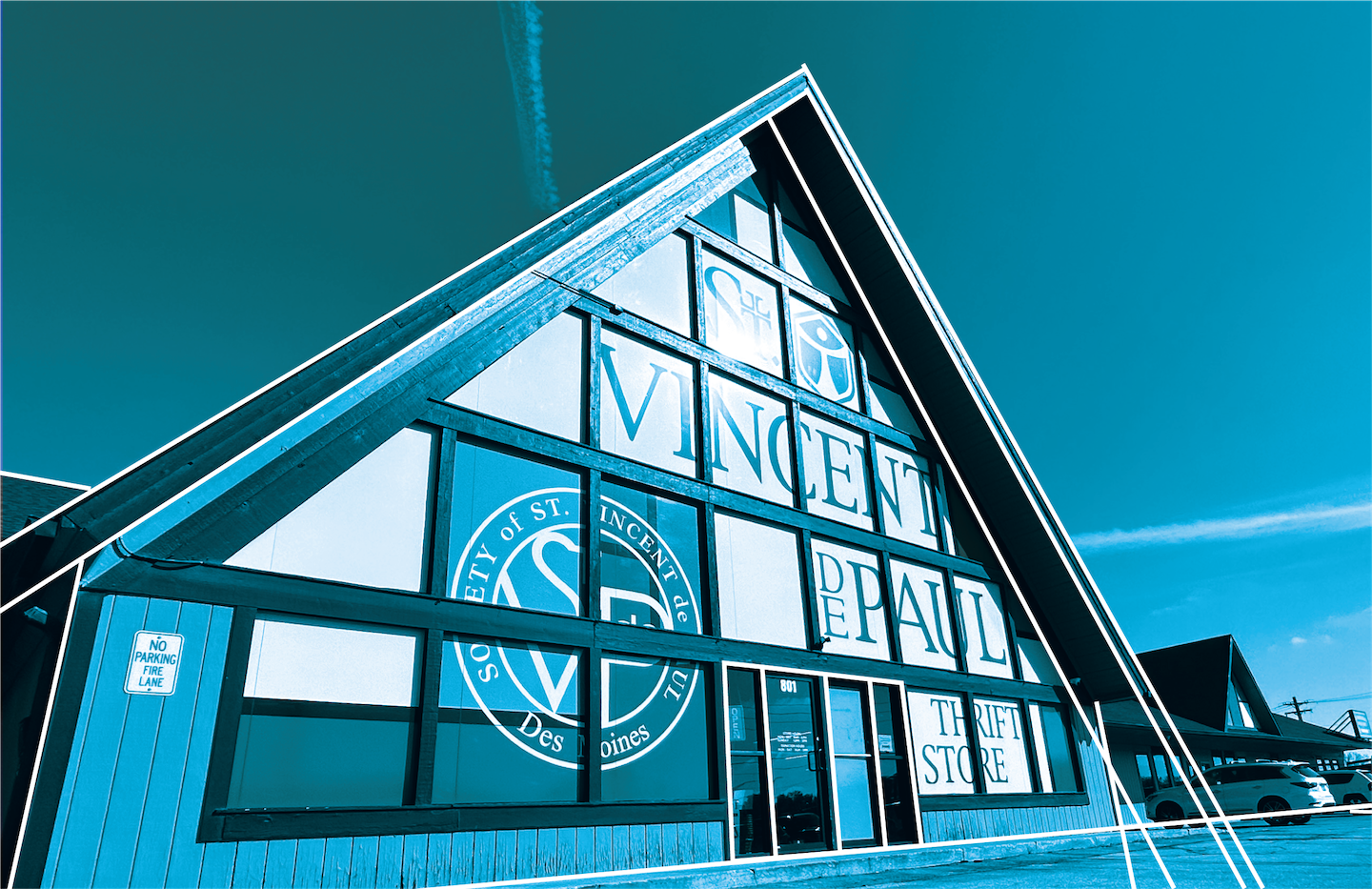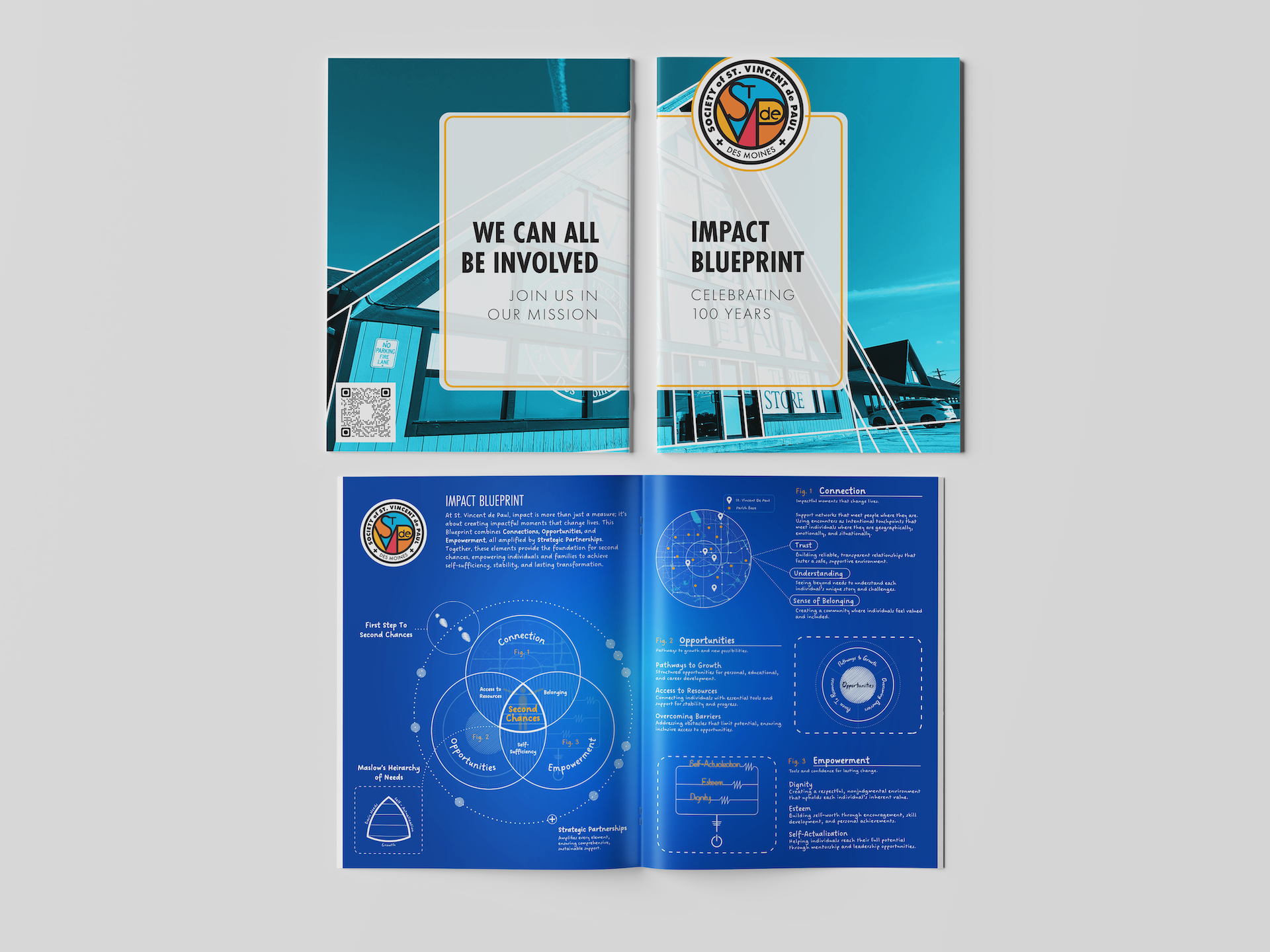
St. Vincent de Paul had the heart, the programs, and the legacy. But what it didn’t have was a clear, modern framework to articulate its impact. As the organization approached its centennial, leadership faced a critical gap: how do we communicate what we do in a way that connects to what we transform?
The ask was simple — help write an annual report. But beneath that request was a more pressing need: translate a century of compassionate service into a story of strategic empowerment.

The breakthrough came in recognizing that SVdP wasn’t struggling with a lack of mission—it was struggling with a lack of structure to communicate it. The real opportunity wasn’t just to tell their story better—it was to design the story as a strategic framework.
That shift turned an annual report into a blueprint for the next century.
The original request: produce a year-in-review report that captured SVdP’s programs and milestones. The organization had plenty of stories, data, and success anecdotes—but no clear way to frame them.
Instead of treating the report as an output, it became an input for strategic clarity. Workshops revealed that SVdP’s biggest need wasn’t documentation—it was direction. A new architecture emerged: an Impact Formula, nine Impact Categories, and a mission narrative built around Second Chances. The report evolved into a living artifact that aligned programs, language, and strategic ambitions across the organization.

The result was more than a report. It was a redefinition. The Impact Blueprint introduced a unifying model grounded in Connections, Opportunities, and Empowerment—amplified by Strategic Partnerships. It integrated Maslow’s hierarchy, modernized SVdP’s mission story, and structured their work around measurable transformation.
The organization now had a formula for communicating impact, not just describing activity.
This transformation wasn’t about new programs—it was about new perspective. The shift from reporting activity to structuring impact challenged long-held assumptions about how legacy nonprofits define success. For a century, SVdP had operated on trust, compassion, and service. Reframing that into a strategic model required discomfort: letting go of narrative habits, confronting gaps in clarity, and aligning diverse stakeholders around a new language of impact. But what emerged was undeniable—clarity that didn’t just simplify the story, it sharpened the mission. For leaders navigating the tension between history and relevance, this blueprint offers more than communication—it offers alignment, agency, and a replicable path forward.

SVdP now leads with clarity, not just compassion. The new framework helps board members align on vision, partners understand their role in a bigger story, and donors see how dollars convert to dignity.
Instead of listing what SVdP does, the Blueprint shows why it works—and how it builds a pathway from crisis to self-sufficiency.
It’s not just storytelling. It’s story structuring—and it’s changing how SVdP operates, partners, and grows.
The Blueprint is now a springboard. It’s being used to reframe website content, train team members, shape strategic planning sessions, and guide community partnerships.
More importantly, it creates replicable value: other legacy nonprofits can use this structure to evolve their own impact models.
This wasn’t just a project. It was a platform for reinvention.
Want to see the full blueprint? View it here: St. Vincent de Paul Impact Blueprint